Lisa Dawn's Blog: The Princess Blog, page 5
June 2, 2025
Review: Yes, Your Grace: Snowfall

The game begins by allowing players to input over their story decisions from the first Yes, Your Grace. For those of us who played it almost five years ago, it might be hard to remember what those decisions were. This task can be bypassed by asking the advisor to make the best decisions, or just give it your best guess. The story picks up a year or so after the previous game left off. King Eryk and Queen Aurelea are still mourning the recent loss of their oldest daughter and have just been blessed with twins, including a boy who will be the next heir to the throne. Unfortunately, the boy was born with a birth defect in the form of a tail that the king and queen desperately seek to hide. Tragedy soon strikes King Eryk and everything important to him, forcing Queen Aurelea to take the helm as she struggles to maintain what's left of their fallen kingdom.

While the circumstances of the first Yes, Your Grace were comfortable until a shocking betrayal took place near the end, Snowfall is full of violent enemies who wish harm on the royal family of Davern and strike where it hurts the most. Players must gather allies throughout the kingdom and maintain their services by earning gold and resources. Helping subjects builds prosperity, which is converted to gold, resources, and happiness each week. It is only possible to acquire the bare minimum amount of gold and resources to survive from week to week if players are prudent. Despite playing as royalty, this game requires survival on a shoestring budget. Collecting extra funds and resources decreases the happiness ranking, which raises the threat level, making the game harder to complete.
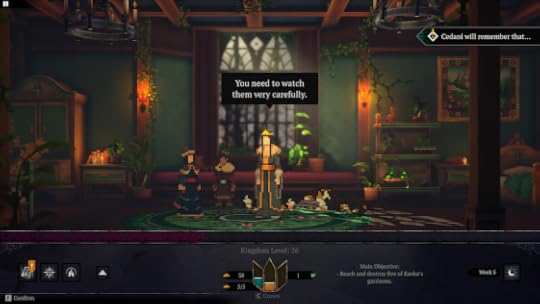
My favorite aspect Yes, Your Grace: Snowfall is the character quests. I enjoyed getting to know the agents who worked in the castle and helping them with personal goals, such as the witch wanting to study to become a bard and the guard who had a secret crush on her. It was also fulfilling getting to know the princesses from the first game better, including Asalea, the rebellious teen who ran away with her girlfriend, and Cedani, the younger daughter who enjoyed playing pranks. Most of these character-building sequences take place during Queen Aurelea's portion of the game while King Eryk is ill. I did not particularly enjoy the dream sequences that Eryk had of the world between the living and the dead. They disrupted the main gameplay and added very little to the story. Although I got the better of the two main endings, the final chapter felt rushed.
Yes, Your Grace: Snowfall offers a gripping and challenging experience that builds upon the foundations of the original game. With its darker tone and increased stakes, players must navigate the complexities of ruling a kingdom under siege. The game's mechanics, such as gathering allies and managing resources, create a sense of urgency and tension. While some aspects, like the dream sequences and rushed ending, may detract from the experience, the character quests and development shine as highlights. Fans of this series and other strategy games will find much to appreciate in Snowfall's intense gameplay and rich storytelling.
June 1, 2025
Review: Golden Goose
If you subscribe to my author newsletter, you saw that today is the first day of Fairy Tale Summer. This is a great annual event that takes place in the Clean Fairytales Facebook group. Readers can share reviews of fairy tale-inspired books with the hashtag #2025 all summer long to earn points for fun book-related prizes. I am one of over 40 featured authors in the event, along with all three books from The Stolen Trilogy. My "author takeover" night in the group will be Monday, July 21st. I hope you join me. Golden Goose by Lea Doue marks my first official review for this year's Fairy Tale Summer. This is the fourth ARC I have received from the multi-author All That Glitters series of fairy tale retellings. The book incorporated a lot of creativity to add depth to a relatively simple fairy tale.
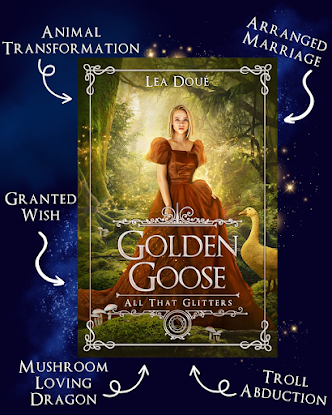
The first thing that stood out to me about Golden Goose is that it takes place in an unapologetic fantasy world. Although the main character, Elowen, is poor and lives on a farm, she encounters unicorns, dragons, and trolls as a regular part of her everyday life. This is an interesting deviation from the traditional fairy tale retelling, where magic is rare or only accessible to certain people. In this world, it is often seen as an inconvenience rather than something worth celebrating. This is especially true when Elowen's brother, Cedar, gets kidnapped by trolls. On her quest to find a magical solution to the problem, Elowen encounters a fairy who turns her dragon friend, Ash, into a golden goose. Matters only get worse when a handful of townspeople get magically stuck to her precious goose friend.
There aren't many retellings of "The Golden Goose" from the Brothers Grimm, and for a good reason. There isn't much depth in a simple story about a bunch of villagers getting stuck to a golden goose and making a princess fall in love with the main character after witnessing the comedic sight. This is a gender-bent version of the story that enhances it with adventure and excitement by turning it into a rescue mission. Elowen becomes engaged to a prince as a result of the sticky goose antics, but that is far from the end of her story. Prince Vale is an unusual character who doesn't care much for royal traditions but still knows how to keep up appearances. After hearing Elowen's story, he decides to help her find her brother and escape from the bizarre circumstances that forced them into wedlock.
Ash is technically the title character, and was my favorite in the book. He acts nothing like a dragon would be expected to. He is neither grand nor intimidating and treats Elowen like a dear friend. When he learns what happened to Cedar, he does not hesitate to do everything in his power to help her. When the fairy spell turns him into a golden goose by day, he is hardly even phased by the transformation. Instead, he wants to take advantage of the situation to rescue Cedar. It works in his favor that very few people know he turns into a dragon at night. Although he reminds me of Spike from My Little Pony, he is apparently still big enough for Elowen to ride, which comes in handy on more than one occasion.
Golden Goose by Lea Doue is a creative and engaging retelling of a lesser-known fairy tale. By incorporating a rich fantasy world and a strong female protagonist, the story adds depth and excitement to the original tale. The unique dynamic between Elowen, Ash, and Prince Vale makes for a compelling narrative that explores themes of friendship, loyalty, and self-discovery. If you're a fan of fairy tale retellings with a twist, Golden Goose is definitely worth checking out. I'm excited to share more of my thoughts on other fairy tale books as Fairy Tale Summer continues!May 30, 2025
Czechoslovakia's Fairy Tale Era
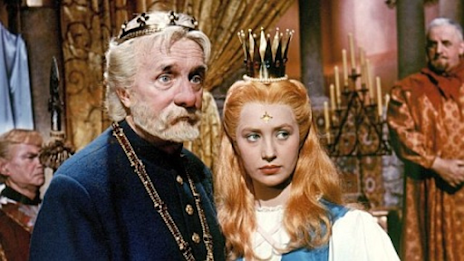
Movies like The Princess with the Golden Star in 1959, The Terribly Sad Princess in 1968, and Princess Goldilocks in 1973 ushered in a market for relatively obscure fairy tales that still remain untouched by Disney. This trend started with the success of 1952's wonderful classic, , which was filmed at the very start of the Cold War and has recently received an animated remake. Introducing Czech audiences to the wonder and freedom of fairy tales allowed them to escape the troubles of their war-torn nation and enjoy the fantasy, opulence, and romance of singing princesses with relatively easy lives. Using the guise of classic fairy tales, filmmakers were able to add more political commentary to these films. This served a dual purpose in allowing audiences to escape their troubles for a while and explore messages that would have otherwise been silenced in a different medium.
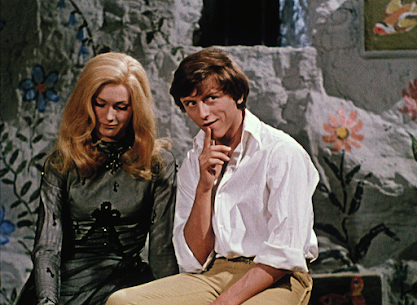
The brief period of the Prague Spring in 1969 temporarily allowed creative freedom from the communist regime for artists and scholars. Both The Princess with the Golden Star and The Terribly Sad Princess were based on fairy tales about princesses in arranged marriages. Both of these adaptations added a subplot about the alliances being arranged to avoid war between kingdoms. Although neither of the original fairy tales mentioned anything about a war, political alliances between royalty were often enforced for this purpose, making it seem like a natural progression. Therefore, these films more culturally relevant to Czechoslovakia than other adaptations of the same stories, including Jim Henson's The Storyteller episode, "Sapsorrow," in 1988, which was based on the same fairy tale as The Princess with the Golden Star and Shelley Duvall's Faerie Tale Theatre episode "The Princess Who Had Never Laughed" in 1986, inspired by the same story as The Terribly Sad Princess.
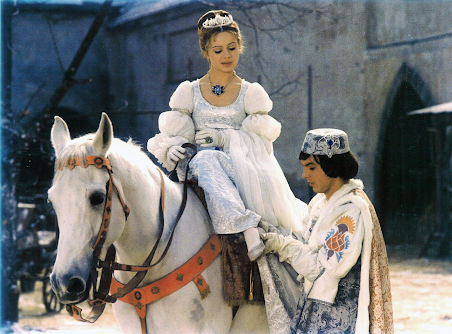
This era also saw a resurgence of well-known fairy tale adaptations written with Czech culture in mind, including Three Wishes for Cinderella in 1973, which had a recent remake, The Little Mermaid in 1976, and How to Wake a Princess in 1978. Although these movies were a wonderful way to protest the abrupt abolishment of the Prague Spring, they simply do not compare to more popular adaptations of these fairy tales from other countries with higher budgets and better effects. The Czech version of "The Little Mermaid" is by far my least favorite adaptation and seemed particularly unnecessary when both a Russian version and a Japanese version were released within the same year. These titles may have been produced to allow Czech citizens to experience local fairy tale adaptations, even though better versions were available due to strained relations with other nations from the Cold War.
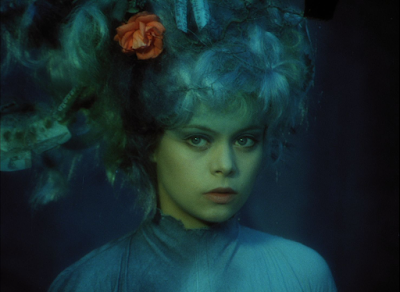
The Czech fairy tale films of the mid-20th century offer a unique glimpse into the country's cultural landscape during the Cold War era. These low-budget musical films, often infused with subtle political commentary, provided a much-needed escape for Czech audiences and showcased the country's own take on beloved fairy tales. While they may not have achieved the same level of recognition as Disney's adaptations, these films remain an important part of Czech cinematic history and a testament to the enduring power of fairy tales to captivate and inspire. Do you have a favorite Czech fairy tale film? Let me know in the comments!
May 27, 2025
Disney's Hollywood Studios Gets a New Little Mermaid Show!
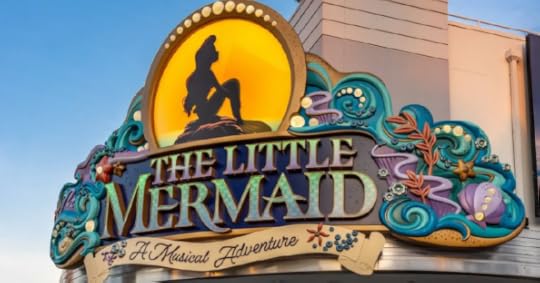
"The Little Mermaid: A Musical Adventure" is five minutes longer than "Voyage of The Little Mermaid," a small amount that makes a huge difference in how much of the story they can include. The new show features five musical numbers from the film's original score, compared to the previous three, and takes full advantage of modern projection technology to use new animation and effects instead of simply replaying scenes from the film on a movie theater-style screen. Ariel's sisters, King Triton, and the sea creatures of Atlantica have been reanimated into CGI puppets who interact with live actors onstage. Real puppets are used for more important animal sidekicks such as Flounder, Sebastian, and Max, creating a 2.5D effect that seamlessly blends real life with animation. You can watch the full show along with an introduction from Jodi Benson, the original voice of Ariel, in the video below.
The most similar aspect of the new show to the previous one is the massive tentacled Ursula puppet who sings a snippet of "Poor Unfortunate Souls." All of the other puppets and costumes look new and improved with modern technology. The show even uses a wire or platform effect to make it look like Ariel is "swimming" across the stage, something the Broadway adaptation tried desperately to avoid. I particularly enjoyed the 2D silhouettes of a human girl dancing behind Ariel while she sang "Part of Your World" and made a deal with Ursula to become human. With so much modern CGI, this simple effect hearkened back to the film's hand-drawn origins. Another new addition came at the end of the show after King Triton gave Ariel her happy ending and said, "I'm sorry you had to lose your voice for me to hear you." This was similar to a line from the new "Little Mermaid" show on the Disney Wish, which is more inspired by Disney's live-action adaptation.
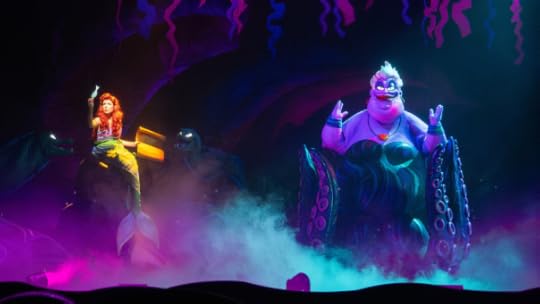
I am so glad this theater is sticking to its roots with an updated version of the same show instead of trying to modernize it or take it in a new direction. Jodi Benson was the perfect spokesperson to introduce this new retelling to the world and remind us of the film that inspired it. "The Little Mermaid: A Musical Adventure" is the perfect blend of live theater, puppetry, animation, and projection effects to bring this classic story to a new audience. The extra five minutes make a huge difference in terms of how much of Ariel's story they can tell. The addition of her sisters as CGI renderings and the "Kiss the Girl" boat scene with Prince Eric broadens the scope of Ariel's world compared to the previous show. It also takes cues from other live adaptations, such as the 2019 television production of The Little Mermaid Live!, which altered the performance of "Under the Sea" to include Ariel in the number.
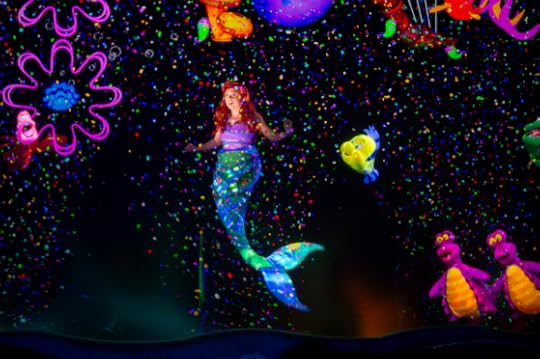
"The Little Mermaid: A Musical Adventure" is a delightful update to the classic "Voyage of The Little Mermaid" stage show. By incorporating modern technology, new animation, and additional musical numbers, the show brings a fresh yet familiar feel to this beloved Disney story. The blend of live theater, puppetry, and projection effects creates a magical experience that will enchant both old and new fans of Ariel's underwater world. I'm thrilled that Disney chose to update and improve the show rather than replace it, and I look forward to seeing parkgoers from around the world enjoy this magical production for years to come. Do you agree that this show is an improvement, or do you prefer "Voyage of The Little Mermaid" and wish they would bring it back? Share your thoughts in the comments below!
May 25, 2025
The Legacy of Princess Fantaghirò
Based on an Italian folktale called "Fanta-Ghiro the Beautiful," Fantaghirò, or Cave of the Golden Rose in the egregiously titled English version, is an iconic and beloved European franchise of movies and animation from the '90s that perfectly embodies the shift from femininity to feminism that took place that decade. The series, which is practically unheard of outside of Europe, is essentially a Western version of Mulan without the ambiguity of the main character's royal status. It follows a traditional "chosen hero's journey" archetype, with the twist being that the chosen hero is a woman born to a king who was desperately seeking a male heir. Fantaghriro disguises herself as a man to fight for her kingdom, falls in love with an enemy king, and ends the centuries-long war between their two kingdoms.
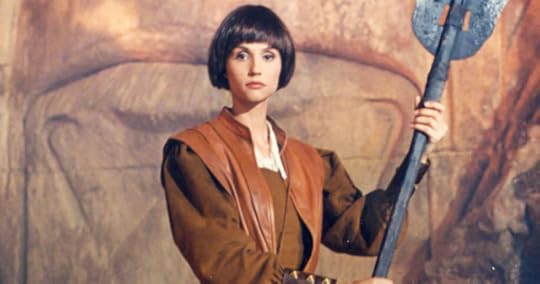
Although elements of these films are hokey and don't always make sense, they take place in a high fantasy setting that provides many fairy tale-inspired elements. Fantaghirò has her own fairy godmother in the White Witch (or White Fairy in the animated version), who watches over her and protects her so she can fulfill her destiny. Her kingdom is located near an enchanted forest, where she befriends a magical talking rock and learns how to fight from the spirits of the forest. She also gains the ability to speak to animals in true princess fashion. The first set of movies is presented like a traditional fairy tale romance, while later sequels experiment more with the fantasy setting. The second set of films pits her against the Dark Witch, a powerful sorceress bent on stealing King Romualdo's love for herself. Later, Fantaghirò meets Tarabas, a dark wizard whom she must kiss to save the man she loves (Yes, that really happens).
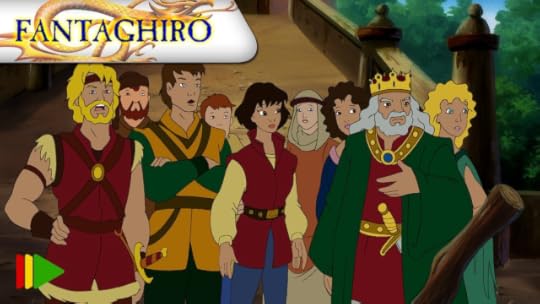
As the movies stray further and further off course from the original story, Fantaghirò ultimately chooses a new love interest in the final film despite how heavily it is established that her relationship with Romualdo is destined and necessary to maintain peace in the kingdoms. The 1999 animated series attempts to resolve this by taking the disjointed events of the ten films and stitching them into a more cohesive story. While the animated series does a better job of protecting the sanctity of Fantaghirò's relationship with Romualdo, it is more fast-paced than the films, making it difficult to follow at times. The series has a similar tone and pacing to the Saban princess cartoons from the '90s and could easily have been made by the same people. It is full of fantasy, magic, and romance, but generally lacks substance and consistency.
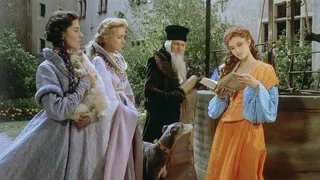
One aspect I particularly enjoyed about the Fantaghirò franchise is the dichotomy between Fantaghirò and her sisters. Princess Caterina and Carolina are raised as traditional princesses because the king was expecting his third child to be a boy. When Fantaghirò was born, she was treated differently and began picking up more masculine traits as a result. Even when the king decided to send his daughters to fight as soldiers because of the prophecy that one of his children would restore peace to Tuan, Caterina and Carolina cannot fight like Fantaghirò. If this had been a modern princess story, Fantaghirò would have likely brought out their inner Warrior Princess and turned them into secondary versions of herself. Instead, they argue and go their separate ways, eventually coming to terms with their differences. Fortunately, King Romualdo has two knights who instantly fall head over heels for the other two princesses, so they get their happy ending as well. This shows that there is more than one way to be happy as a woman.
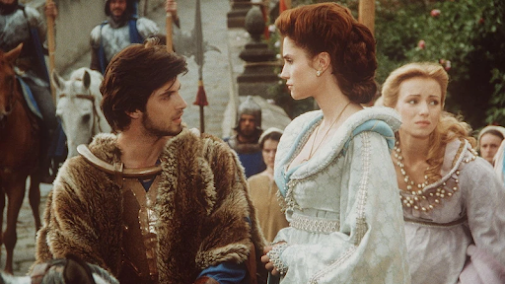
At the time that Fantaghirò came out, romance was still heavily prioritized in women's media, particularly those about princesses. Fantaghirò was considered unique as a heroine because she fought like a man and loved like a woman. In every movie, she changes people and defeats the forces of evil with her love. Could Fantaghirò have been a man and still brought peace to the kingdoms by falling in love with an enemy princess? Probably. Yet, the unique combination of romance and action is what made this series such a hit, and it's something we rarely see anymore in modern media. Fantaghirò also becomes a maternal figure in later films, frequently befriending children and fighting to protect them. Nowadays, characters like Fantaghirò don't need love interests because they can do everything themselves, and motherhood is also discouraged in many feminist films.
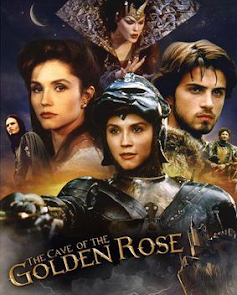
In a world where fairy tale romance is frowned upon, the Fantaghirò franchise remains a beloved and iconic series that perfectly captures the spirit of '90s feminism. With its unique blend of action, romance, and fantasy, it's a European pop culture phenomenon that explores themes of femininity and empowerment. While women dressing as men and going to war has been a fairly popular concept in the Eastern world for many years, Fantaghirò is an inspirational heroine for Western audiences. If you're interested in revisiting this nostalgic gem, all ten of the original films and the 26-episode animated series are available to watch for free on YouTube, offering a delightful journey into a magical world of wonder and adventure.
May 23, 2025
Review: A Crowned Hope
I was in the mood for something hopeful recently, so I took a dive back into the Hope Ever After multi-author series of fairy tale retellings. A Crowned Hope by Kayla Eshbaugh is the sixth book I've read from this series, and I don't even think I've covered half of them yet. This book is a sweet retelling of The Prince(ss) and the Pauper with cozy romantic vibes. Although the book has a villain, he is a minor part of the story and only appears in a few scenes. Overall, it is a pleasant escape from reality with a humble protagonist who is loved by many people.
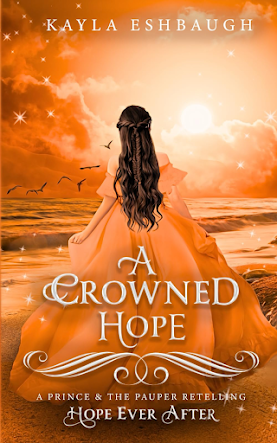
Keira is a peasant girl who owes money on her cottage to a greedy noble named Lord Roth, who threatens to force her to marry him if she can't pay it off. She just happens to be good friends with Princess Anna and shares a strong enough resemblance to her. Because of Anna's trauma over a recent lost love, she asks Keira to impersonate her to deter the affections of a foreign prince who has come to court her. It works so well that Prince Oliver is completely taken in by Keira's humility, grace, and horse grooming skills. When he eventually learns her secret, he holds no ill will toward her and instead swears revenge on Lord Roth for his ill treatment of the beloved pauper.
This is a cozy and romantic story that takes place in an unnecessarily complicated world. The prologue tells of a magical race called the Ancients and a wicked king's curse from the distant past, but none of that is important to Keira and Oliver's story. Due to being a descendant of the wicked king, Oliver believes his bloodline is cursed to only have one child each, yet the curse already seems to have broken because he has a brother. As a reader, I did not see the problem with the royal lineage having one child each because that means they would always have an heir. Yet, this was something that Oliver was concerned about when he decided to marry Keira. The magical backdrop also played little part in the setting, aside from some pretty multi-colored seashells in Keira's kingdom.
Despite her low status, Keira is treated well by everyone in the story except Lord Roth, making it a pleasant read for someone who is feeling low. There is barely any conflict in the story. When there is, Lord Roth seems completely unjustified in his actions, leaving no room for remorse in his punishment. Most of Keira's struggles revolve around her low self-esteem in thinking that she does not deserve to marry a prince. However, practically everyone in the book is on her side, especially Princess Anna. It was great to see such a supportive cast of characters. I also liked how Anna and Keira's names subtly reference two different Barbie movies that were inspired by the same story.
A Crowned Hope is a heartwarming and romantic retelling of The Prince and the Pauper that offers a pleasant escape from reality. With its cozy atmosphere, humble protagonist, and supportive cast of characters, this book is a great choice for readers looking for a feel-good story. Although the world-building could be tighter, the romance and character relationships shine through, making it a delightful read for those looking for some hope in their lives. The Hope Ever After series has a lot of diversity in terms of tone and setting, so it was interesting to see how much this one differed from the others I've read so far.May 22, 2025
Review: The Proud Princess (2024)
The Proud Princess (or Pysná princezna) is a 2024 animated remake of a 1952 live-action Czech movie based on the Czech fairy tale "Potrestaná pýcha" or "Punished Pride." The story is similar to "King Thrushbeard" with a prideful princess and a king in disguise. However, it also has unique elements, including a kingdom-wide ban on music and a magical singing flower. The fact that this animated remake came out at a time when live-action remakes are at their peak demonstrates that Disney is missing out on a great opportunity that the Czech market has cashed in on. The 1952 live-action movie is incredibly entertaining despite its dated black and white palette, and its animated counterpart is a faithful adaptation with updated characters and effects that bring the story to life for a new generation.
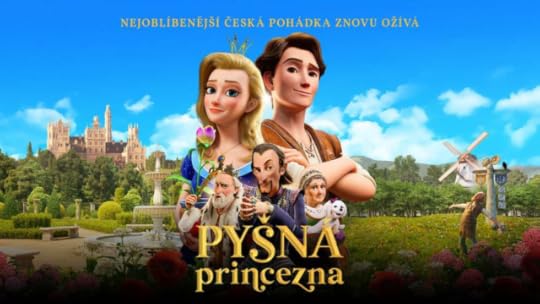
Princess Carolina is a beautiful but spoiled princess from the Midnight Kingdom who grew up with a father whose actions were guided by three corrupt officials. When she came of age to marry, her portrait was sent to the Sunshine Kingdom, where Prince Benjamin instantly fell in love with her. In a spontaneous decision to switch clothes with a cobbler he meets on the way to court the princess, Benjamin disguises himself as a peasant, revealing Carolina's arrogant nature. He gets a job at her castle as a gardener and harvests a magical singing flower that reminds the princess of her happier days before singing was banned from the kingdom. This inspires him to give her music lessons, causing the two to fall in love. His pretend status as a peasant gets him banned from the castle for winning the princess's heart, and the two decide to run away together.
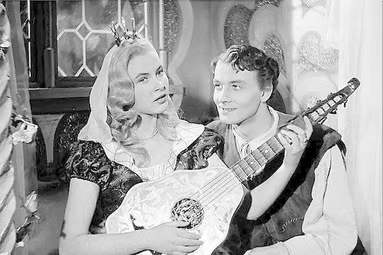
One of the things I liked about this movie is that, unlike many Disney remakes, which try to correct non-existent problems with the original films, this movie celebrates everything that made the 1952 original great while taking full advantage of the animated medium. Many scenes between Carolina and Benjamin are nearly identical to the original film. However, thanks to the modern visuals, the singing flower glows and dances in a way that can only be done in animation, and many animal sidekicks have fun and humorous antics that would have been difficult to film with real animals. Simple modern visual effects enhance Carolina's backstory by showing artwork of happy times from her childhood, reflected in her favorite palace fountain. Action sequences in which the two must escape the wicked advisors take place in the same settings as the original film, but are made larger than life by the animated medium, such as a downhill log ride that adds a roller coaster-like loop.
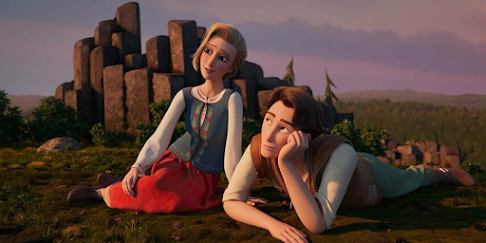
Since there is no feature-length animated adaptation of "King Thrushbeard," this Czech version of the fairy tale conveys the same themes with beautiful visuals and believable characters. Carolina and Benjamin are still the same people in this movie as in the 1952 film, but they are even more memorable thanks to their detailed character models and updated dialogue. Their love story is convincing, showing how Benjamin gradually reminds Carolina of her happy childhood by reintroducing music to her life, similar to Maria and Captain von Trapp in The Sound of Music . While the behavior of the male lead from the "King Thrushbeard" fairy tale borders on abusive at times, King Benjamin is consistently kind to Carolina, never forcing her to work until it becomes necessary after they run away together. This makes their relationship healthier, so she is more justified in accepting his deceit about his identity.
The Proud Princess is a delightful animated remake that breathes new life into a classic Czech fairy tale. By celebrating the original 1952 film while leveraging the possibilities of animation, the movie creates a charming and visually stunning experience. With its beautiful visuals, believable characters, and healthy romance, this Czech adaptation is a great alternative to more well-known fairy tales like "King Thrushbeard." It's a testament to the enduring power of storytelling and a reminder that there's always room for fresh takes on timeless themes. Disney, take notes. We want more animated adaptations, not more live-action ones.
May 18, 2025
Are You Going to Scarborough Faire?
After my last Ren Faire review, one of my readers suggested I check out the Scarborough Renaissance Festival in Waxahachie, Texas. This is a much bigger and more popular festival than the Sherwood Forest Faire, but does that make it better? Though this faire offers some unique experiences that Sherwood didn't, the trip reminded me more of a stressful visit to a Disney Park than a relaxing jaunt back in time. It was a three-hour drive to arrive at an enormous parking lot on a hilly field with a long walk to the front gate. While the castle tower entrances and dividers between the grounds were impressive, there were long lines for everything. Renaissance Faires are always fun experiences, so I understand why this one was so popular, but I prefer a more intimate and relaxing setting.

For me, the biggest appeal of the Scarborough Renaissance Festival is the Mermaid Lagoon, a small walk-around area that costs an extra dollar per person to speak to two live mermaids and one merman. This was particularly relevant because I visited during the Legends of the Seas-themed weekend. I wore my seashell crown and necklace in honor of the occasion. The entrance to the lagoon contained a mermaid statue and a giant ship. Walking through the line reveals a huge clam with pearls inside, followed by the main attraction, two mermaids sitting on a ledge with their tails dipped in a pool of water. They asked each passerby if they had any questions they wanted to ask a live mermaid. I asked them if their tails turn into legs when they're dried up, and they responded that their tails get smelly when they're dry. Then I said I like to be a mermaid in the water sometimes, so they asked me what the secret is to getting legs on land. I thought about it for a while and told them it's just luck.
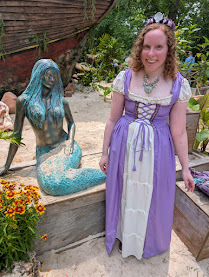
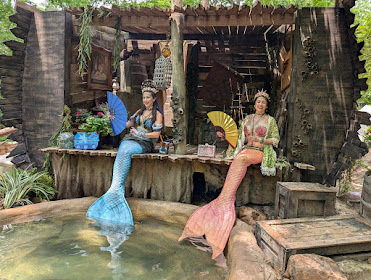
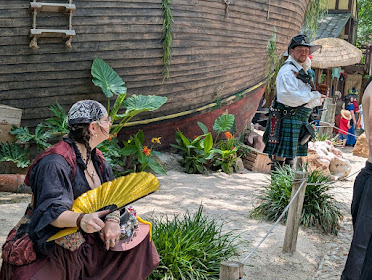
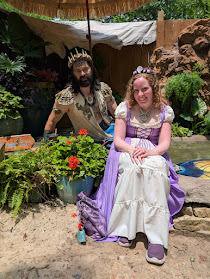
The only thing I love as much as mermaids are faeries, and unfortunately, I did not see any during this visit. However, there was a very cool photo spot that allowed people to look like they had huge iridescent fairy wings. This led to a vale with a small fairy house and some giant mushrooms. There was also a Midsummer Faery Tea Party for the kids at 11:30, but we arrived slightly late for it due to the long lines and parking situation. There was an 11:00 performance of Shakespeare's "A Midsummer Night's Dream," which partially inspired the book I am releasing this summer. However, there was no way we could have gotten there in time without getting up at the crack of dawn. I wish they had repeat performances or an ongoing story like Sherwood Forest Faire. We managed to catch the Grande Parade, which consisted mostly of people walking around in costumes to promote other events at the faire.
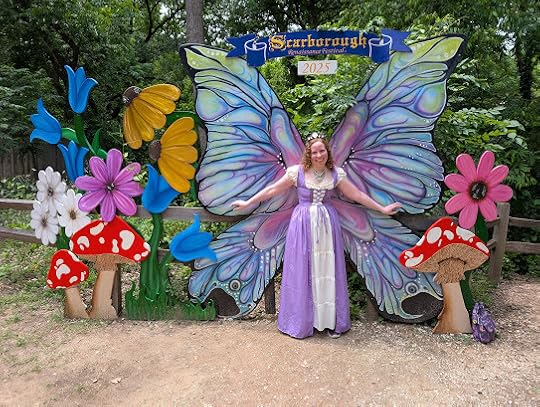
Unfortunately, the weather was not in our favor. The high heat and humidity caused us to experience mild symptoms of heat stroke, and we needed to leave early (Stay hydrated, folks!). Because of this, it's hard to comment on too many of the other experiences that the faire had to offer. The shows were more spread out than Sherwood Forest, making it difficult to accidentally walk in on an unexpected performance. There were lots of vendors for food, and historical costumes and accessories. I didn't see as much fantasy artwork as Sherwood, but one vendor sold tapestries. The most interesting thing I saw while walking the grounds was a real-life carousel where children could ride horses around in a circle under a tent like a regular carousel. The faire also offered camel rides for an additional fee, so there were plenty of interesting activities for animal lovers to partake in.

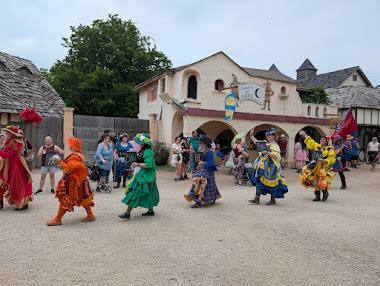
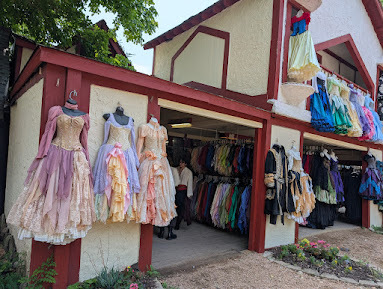
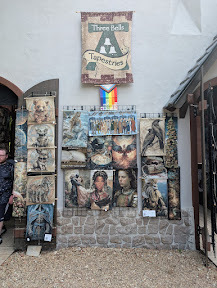
While the Scarborough Renaissance Festival offered some unique experiences, such as the enchanting Mermaid Lagoon and a whimsical fairy photo spot, the overwhelming crowds and long lines detracted from my overall enjoyment. Despite its popularity, I found that the festival's large size and hectic atmosphere made it more akin to a theme park than a relaxing Renaissance Faire experience. Perhaps a repeat visit on a cooler day or with more time to explore would yield a different experience. For now, I'll hold onto the memories of the mermaids and look forward to future Renaissance Faire adventures.

May 16, 2025
Review: Siren's Treasure
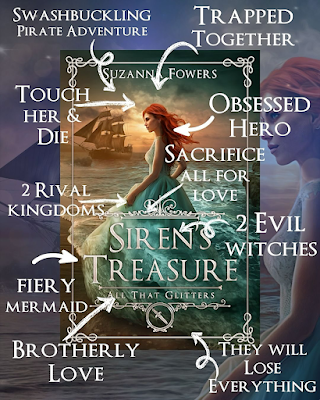
Siren's Treasure is a sequel to the original story of "The Little Mermaid" that focuses on the descendants of the merfolk and humans who were affected by the events of the fairy tale. Thessa is the niece of Undine, the original "little mermaid" heroine, whose father will die if she is unable to obtain the dagger that her aunt was given to kill the human prince she was in love with. To get it, she will need legs. She makes a deal with Scylla, the sea witch, to trade her siren powers for a pair of legs. Upon turning human, she is reunited with Raggon, a pirate prince whom she rescued when she still had her mermaid powers. After spending more time with him, she learns that the history she was told about her aunt is different from what the descendants of the human prince were told.
This book leans very heavily into the lore of the Hans Christian Andersen fairy tale, but changes it just enough to confuse even readers who are familiar with the original story. Raggon has magical seafoam powers in his bloodline that were granted by Undine after she became a sylph (or daughter of the air). Thessa believes that her aunt sacrificed herself to let the prince be happy with his new lover, while Raggon believes that his ancestor married Undine after her transformation into a sylph, granting powers to all their descendants. However, Undine would not have gotten the knife and sacrificed herself to become a spirit in the first place if the prince had not married another woman. The book did not provide an adequate explanation of these events.
Aside from some complications with the lore, Siren's Treasure is a thrilling adventure with high stakes and tons of magical mayhem. There are two villains in this story, Scylla the sea witch and Circe the land witch. Both protagonists have impressive magical abilities. Thessa is unique as a siren because she can heal with her voice, and Raggon's ancestry allows him to teleport like X-Men's Nightcrawler by morphing into sea foam. Just as Thessa is on a quest to save her father, Raggon seeks to use Undine's blade to save his brother from a curse that is slowly transforming him into a dragon. It seems like there's some kind of new peril happening on every page. The romance between Thessa and Raggon builds momentum pretty quickly out of necessity for the two of them to resolve their mutual conflicts.
Siren's Treasure is a thrilling and action-packed retelling of "The Little Mermaid" that combines fantasy, adventure, and romance. While its heavy reliance on the original fairy tale's lore may pose a challenge for some readers, the book's fast-paced plot, magical mayhem, and complex characters make it a compelling read. Despite some inconsistencies in the storytelling, Suzanna Fowers' vivid world-building and engaging characters shine through, making Siren's Treasure a captivating addition to the All That Glitters series.
May 13, 2025
Ten Live-Action Snow White Interpretations Ranked
Today is the day that Disney's live-action Snow White comes out on Disney+, providing an opportunity for the many people who did not see it in theaters to watch it. In honor of this occasion, I have explored many of the previous live-action interpretations of this character that have come before. Although I still have strong feelings about remaking the first feature-length animated movie of all time in a live-action format, I did not think that Disney's newest adaptation was the worst one. Yet, it had so much competition from its predecessors that it did seem a bit unnecessary. Let's explore all the live-action Snow Whites that came before and see where this one falls. Please note that this is purely for fun and not an official ranking by any means. All opinions are my own. Feel free to share yours in the comments, whether you agree or disagree with my list..
10. Snow White and the Huntsman (2012)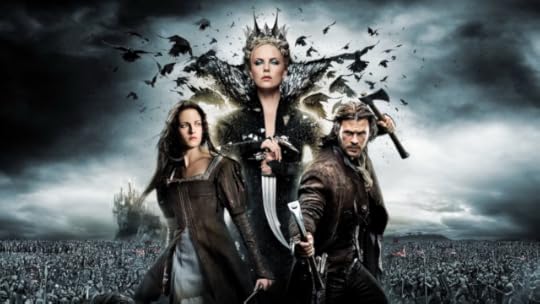
I tried to watch this movie again recently because I didn't remember it very well from 2012. What I discovered was that Snow White and the Huntsman is virtually unwatchable. I could not stop checking the time, looking at my phone, and wondering why it wasn't over yet. I believe I saw a video review once that pointed out a scene where the queen opened her mouth and sucked all the youth and beauty out of a girl she kept prisoner. The person who made the video asked why she never did that to Snow White, since that would have instantly solved her problem of Snow White being prettier. I think the best answer is that the movie would have been over a lot sooner, and we wouldn't have needed to tolerate 's wooden performance for nearly as long.9. Faerie Tale Theatre (1984)
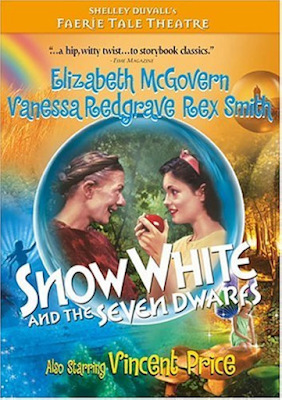
Shelley Duvall's Faerie Tale Theatre is a cult classic from the '80s that features celebrity guest stars in almost every episode and covers many obscure fairy tales that did not have film adaptations at the time. That said, the TV budget and casual atmosphere on set often got in the way of telling these stories in a way that could be taken seriously by fairy tale enthusiasts. "Snow White and the Seven Dwarfs" is no exception. seemed bored with her role as the fair princess. Just about every single one of her lines fell flat. The most interesting character was a dwarf named Bubba, though his performance may seem dated by today's standards. The prince was an extremely flat character who sat near the dwarfs' cottage, singing songs about how he dreamed of true love until the appropriate time for him to wake Snow White.8. The Charmings (1987)
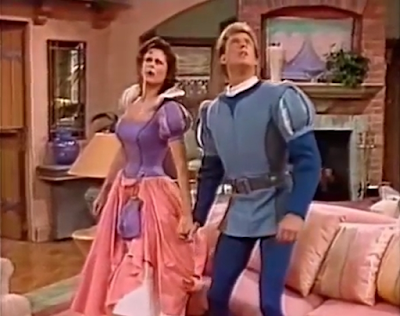
This '80s sitcom was pure camp and still like a fever dream to watch today. It has its appeal if you're in the mood for something light and cheesy, but it is more of a caricature of Snow White than a true reimagining of her. The swap between and transitioned the character from a bumbling fish out of water to a modern career woman. This was a believable enough arc, but the show never took itself seriously enough to give her any real depth as a living, breathing person.7. Snow White (2025)
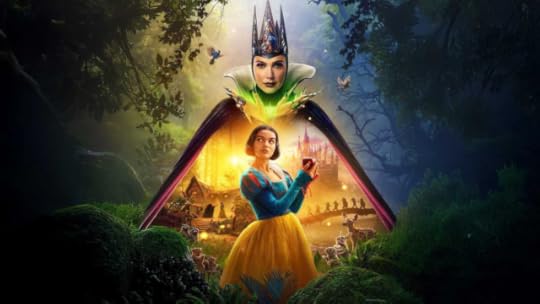
Disney's newest reimagining of "Snow White" is not the worst, but it cannot compare to its animated predecessor or many of the other live-action interpretations that came before it. Upon a second viewing, I thought the movie started out pretty strong. It's only after the CGI dwarfs are introduced that the story takes a downward spiral and never quite recovers. The new songs are catchy, and some of the visuals are interesting. However, the movie is desperately in need of a new costume designer and real-life actors for the dwarfs.6. Snow White (1987)
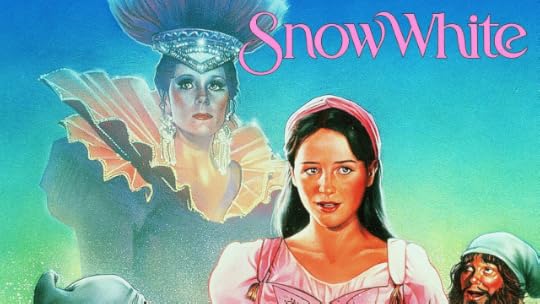
I've updated my list of screen-accurate retellings to include this movie as the most accurate interpretation of the original fairy tale. Of all the adaptations I've watched, this one pulls the most content directly from the Brothers Grimm. It uses all three of the original weapons that the queen uses to try to kill Snow White, ages the princess down to seven when she moves in with the dwarfs, and has her awaken from the apple being dislodged from her throat instead of with a kiss. Despite its accuracy, the movie is not the most entertaining adaptation in the world. There are too many musical numbers at the beginning and not enough at the end. It also sheds light on why some of elements of the original fairy tale were changed in other adaptations of the story.5. Snow White: The Fairest of Them All (2001)
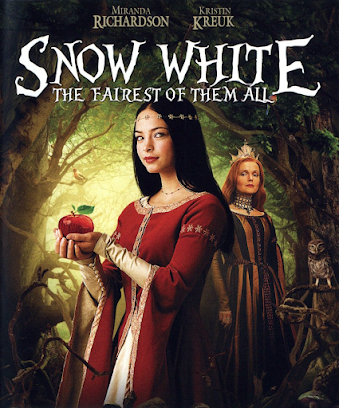
This is the movie I originally thought was the most accurate to the fairy tale before seeing the 1987 adaptation. Upon a second viewing, I noticed it makes a lot of creative changes that are pretty entertaining. It changes Snow White's backstory to show that her father became king with the help of a djinn and gives the dwarfs magic rainbow powers. I've always thought that made a perfect Snow White with her elegance and sweetness. The movie has some interesting visuals and expands on the backstory of the evil queen to explain why she was so obsessed with beauty.4. Mirror Mirror (2012)
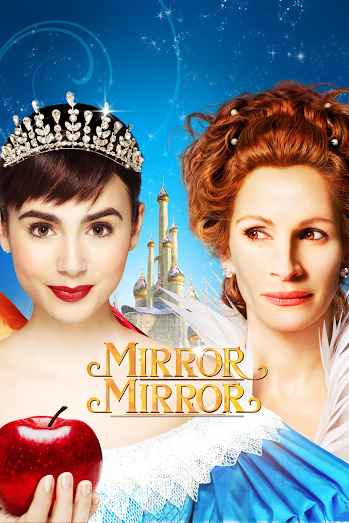
Although this movie came out the same year as Snow White and the Huntsman, it could not be more different. Taking on a light, comedic vibe that directly contrasts Huntsman's dark, violent themes, Mirror Mirror is full of joy and light. shines as Snow White, bringing the sweetness and innocence the character is famous for. The prince has a more humorous role than other interpretations by regularly getting caught in traps and being rescued by Snow White. Their dynamic works well and makes their relationship unique. The twist at the end of the film is also distinctive and highlights Snow White's loving and nonviolent nature.3. The 10th Kingdom (2000)
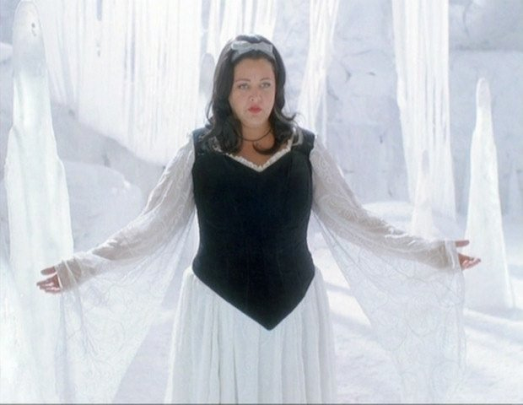
absolutely slayed in this role as an older plus-sized Snow White. Her gentle performance shows us that beauty can come in all shapes and sizes. She provides a more serious take on an adult Snow White than The Charmings. Her role as a mentor to Virginia makes perfect sense for a legendary princess who lived a full life and knows the ups and downs of being a heroic girl who was hunted by someone she once cared about. Although her role was short, it was memorable and impactful. Plus, she had some cool ghost powers later in the miniseries.2. Once Upon a Time (2011)
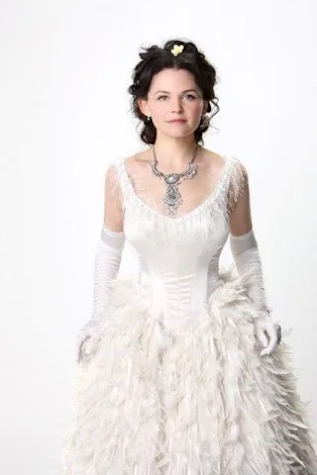
nailed the role of Snow White so hard that there is no point in anyone ever trying to compete with her. Her gentle nature shines through in everything she does, no matter how dire the situation gets or how rebellious she becomes. Though her portrayal is a modern interpretation of the character who isn't afraid to fight back, there is a softness to her dialogue and actions that hearkens back to the original fairy tale. The plot of her having a daughter that she needed to give up is also interesting and adds layers of depth and trauma to her character, making her feel more like a real person.1. Snow White and the Three Stooges (1961)
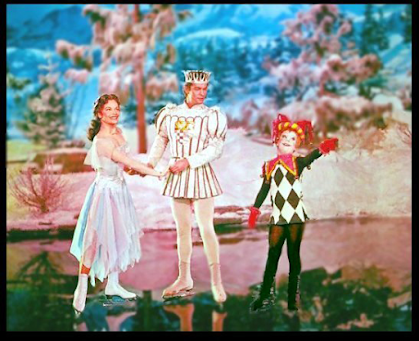
If you've been following my blog for a while, my number one choice should come as no surprise to you. Snow White and the Three Stooges is a celebration of Hollywood glamor with gorgeous sets, costumes, ice choreography, and vintage fantasy sequences. The choice to cast Olympic figure skater as Snow White was an inspired choice that paid off with some spectacular sequences. It is also the only adaptation where the prince is raised by characters who take on the role of the dwarfs, adding additional depth to his character. Overall, this movie reminds me of a time when Hollywood was creative, elegant, and inspirational.
Do you agree with these choices, or do you have a different favorite? Let me know in the comments below!



